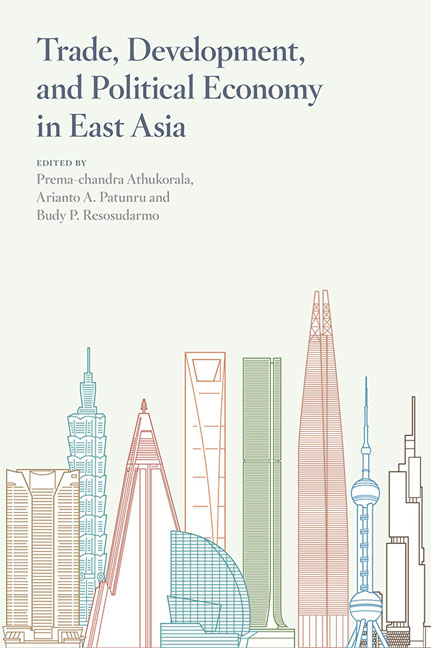Book contents
- Frontmatter
- Contents
- Tables
- Figures
- Contributors
- Foreword
- Acknowledgments
- Glossary
- 1 Introduction
- PART 1 TRADE
- PART 2 DEVELOPMENT
- 5 Economic relations between China, India and Southeast Asia: coping with threats and opportunities
- 6 Revisiting the growth acceleration episodes of Indonesia and India: a political economy reading
- 7 Exporting, education, and wage differentials between foreign multinationals and local plants in Indonesian and Malaysian manufacturing
- 8 Indonesia: returns to occupation, education, and ability during a resource export boom
- 9 Labour market regulation and employment during the Yudhoyono years in Indonesia
- 10 Vietnam: trapped on the trail of the tigers?
- PART 3 POLITICAL ECONOMY
- References
- Index
5 - Economic relations between China, India and Southeast Asia: coping with threats and opportunities
from PART 2 - DEVELOPMENT
Published online by Cambridge University Press: 19 May 2017
- Frontmatter
- Contents
- Tables
- Figures
- Contributors
- Foreword
- Acknowledgments
- Glossary
- 1 Introduction
- PART 1 TRADE
- PART 2 DEVELOPMENT
- 5 Economic relations between China, India and Southeast Asia: coping with threats and opportunities
- 6 Revisiting the growth acceleration episodes of Indonesia and India: a political economy reading
- 7 Exporting, education, and wage differentials between foreign multinationals and local plants in Indonesian and Malaysian manufacturing
- 8 Indonesia: returns to occupation, education, and ability during a resource export boom
- 9 Labour market regulation and employment during the Yudhoyono years in Indonesia
- 10 Vietnam: trapped on the trail of the tigers?
- PART 3 POLITICAL ECONOMY
- References
- Index
Summary
INTRODUCTION
This chapter examines how economic links between the ASEAN countries and the two Asian giants, China and India, have changed over the past two decades. The first section summarises the literature on the rise of China and India, and the implications of this rise for the global economy. This section also examines the literature on the threats posed by China to both ASEAN and other parts of the developing world, and the implications for ASEAN of the growth of ‘Factory Asia’. The second section examines the statistical evidence on patterns of ASEAN merchandise trade, investment flows, and migration between ASEAN and other parts of Asia. The third section of the chapter discusses the implications of the free trade agreement between ASEAN and China and ASEAN and India for patterns of trade and investment across Asia. The main conclusion of the paper is that the ASEAN countries have benefited from increased economic links with China and to a lesser extent India. But economic links within ASEAN and between ASEAN and other OECD countries remain very important. The free trade agreements between ASEAN and both India and China became fully operational in 2010; in neither case do they appear to have led to a dramatic increase in bilateral trade or investment flows.
THE RISE OF CHINA AND INDIA AND THE ‘THREAT’ TO SOUTHEAST ASIA
The Asian crisis and its aftermath
In 1996, the ASEAN-6 all had per capita GDP above both China and India, with the possible exception of the Philippines (Table 5.1). Four of these six countries had achieved more than three decades of sustained economic growth, and were selected for inclusion in the World Bank's 1993 ‘Asian Miracle’ report (Singapore, Malaysia, Thailand and Indonesia). The World Bank, and many other observers, argued that these countries had ‘got their policies right’ and should be taken as models by less successful economies in other parts of the developing world. The 1993 report, written in the aftermath of the violence in Tiananmen Square, did not include China as one of the Asian miracles, although there was some discussion of the ‘growth spillover’ from Hong Kong into southern China.
- Type
- Chapter
- Information
- Trade, Development, and Political Economy in East AsiaEssays in Honour of Hal Hill, pp. 67 - 89Publisher: ISEAS–Yusof Ishak InstitutePrint publication year: 2014

